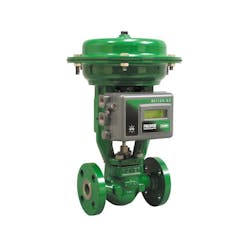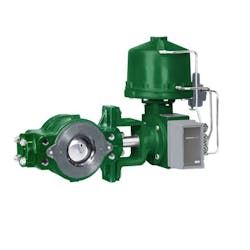Like so many of the core technologies integral to automated industrial operations—such as motors, drives, and I/O—valves don’t always receive the attention they deserve in the automation arena. Despite this, their functionality is no less critical to the safe and effective control of fluid movement. Also, as basic as valves may seem, the technology surrounding them has not remained static.
To help answer a reader question about how to select the right valve for an application, we connected with Ross Turbiville of Emerson Automation Solutions to learn more about the different types of commonly available automated valves; how to determine valve sizing and performance based on flow, pressure, and temperature characteristics of the fluid to be controlled; the impact of piping systems on valve choice; and the effect a valve’s construction materials can have on its performance.
Valve type, size, performance
Our discussion began by looking at the different types of commonly available automated valves based on their function and how the media to be controlled by the valve impacts a user's selection decision.
With regard to valve sizing and performance based on flow, pressure, and temperature characteristics of the media moving through the piping system, Turbiville explained that, first and foremost, users need to consider this from a safety perspective. More specifically, he said users need to carefully consider the valve’s “material capability from a corrosion/erosion perspective with the media that you're flowing…[as well as] the pressure and temperature limitations of a given material to ensure that the material and the pressure class rating you select for the valve meets code requirements.”
Piping considerations
Explaining how the type of piping system used can impact valve choice, Turbiville said, when considering a control valve, realize that the capacity of the valve is dictated by IEC 60534-2-3. This standard “defines the number of straight runs of pipe upstream and downstream of the valves, as well as sensor locations to allow measuring the capacity of the valve in a lab environment. Any time you get into a potential piping system that is compressed, there is also a risk the capacity of the valve could be different than the published values. [That’s why] it's also good to note that, with the published values, the standards allow a margin of error in the capacity dictated by the industry codes. When looking at a piping system, understand what the piping system looks like, and then consult with your valve vendor if you have a very tight piping system to understand the impacts.”
Electric, pneumatic, or hydraulic
To help users navigate their valve choice among electric, pneumatic, or hydraulic valves to determine which one is the best fit for their operation, Turbiville said there are two ways to approach this determination.
“First and foremost, look at it from a performance perspective—how quickly a valve needs to respond to process changes. Whether it’s a control valve or an on/off valve, make sure the process is addressed [by the valve in] the way it's intended in the design.”
If you need quicker response to a process change or command, Turbiville recommends looking at pneumatic or hydraulic operating valves. In applications where response time is less critical, he said valves with electric actuation can be considered.
Beyond deciding among electric, pneumatic, and hydraulic valve types, Turbiville stressed careful consideration of the valve’s cost. From a pure cost perspective, hydraulic actuators are typically the most expensive, followed by electric actuators, said Turbiville, with the most economical actuators being pneumatic.
Turbiville noted that, when considering the cost of a valve, to look beyond the vendor price and evaluate overall cost impacts, such as maintenance and environmental safety and health considerations. You also need to look at what emissions could look like, depending on the media being handled.
“In the upstream oil and gas world, if you're using gas to drive a pneumatic actuator, that may make less sense with changing regulations, [leading you to] go electric. Hydraulics can provide extremely high-resolution control as they can move very quickly. But they also have an oil reservoir that needs to be considered,” he said.
Leaders relevant to this article:





